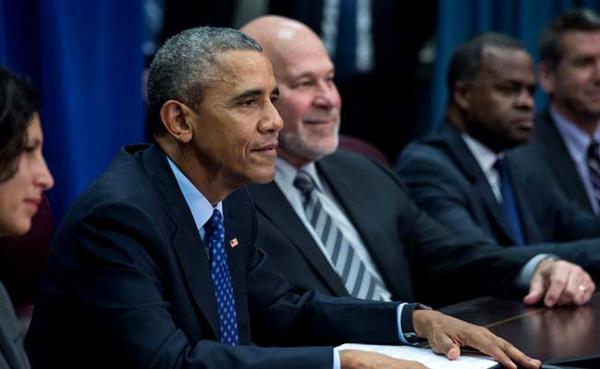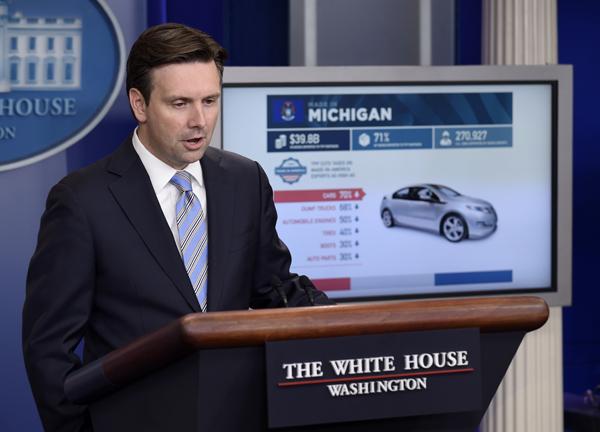You are here
Asian states hail deal on world’s largest free trade area
By Agencies - Oct 06,2015 - Last updated at Oct 06,2015

This photo taken on September 27 shows an oil/chemical tanker registered in the Marshall Islands sailing under Sydney Harbour Bridge after arriving in Australia. Australia on Tuesday hailed a deal to create the world’s largest free trade area as a huge opportunity for businesses, farmers and manufacturers to cash in on the burgeoning Asia-Pacific region (AFP photo)
TOKYO — Asian members of the newly-minted Trans-Pacific Partnership (TPP) Tuesday hailed the deal to create the world’s largest free trade area, with Japan calling it the start of a “new century” for the region.
Delegates from 12 Pacific Rim nations finally managed to hammer out an agreement in Atlanta, Georgia on Monday, five years after the US-led talks first began.
Spanning about two-fifths of the global economy, the hard-won deal aims to set the rules for 21st century trade and investment and press non-member China to shape its behaviour in commerce, investment and business regulation to TPP standards.
Under the deal 98 per cent of tariffs will be eliminated on everything from beef, dairy products, wine, sugar, rice, horticulture and seafood through to manufactured products, resources and energy.
Those involved are the US, Canada, Japan, Australia, Brunei, Chile, Malaysia, Mexico, New Zealand, Peru, Singapore and Vietnam.
Asian members were quick to follow President Barack Obama in declaring the agreement a win, even if most nations were forced to compromise on key issues and exact details of the deal remain scant.
“It’s the opening of a new century for the Asia-Pacific region,” Japanese Prime Minister Shinzo Abe told reporters, hailing the emergence of a “huge economic zone”.
Australian Prime Minister Malcolm Turnbull described the agreement as “a gigantic foundation stone for our future prosperity”.
His New Zealand counterpart John Key said it was the culmination of two decades of work and would offer “more jobs, higher incomes and a better standard of living”.
Malaysia also hailed the deal, saying it had managed to avoid restrictions on its politically sensitive system of favouring the ethnic Malay majority economically.
China, which is not party to the talks, gave the agreement a cautious welcome, with the ministry of commerce describing TPP as “one of the key free trade agreements for the Asia-Pacific region”.
But there was no indication whether it might join itself.
‘Devil’s in the detail’
Consensus in Atlanta was only reached after a number of countries made concessions on protected industries, moves which might be hard for domestic voters to swallow.
And critics lambasted the way many details are still secret.
“The lack of access to details in the text means governments can put a positive spin on the deal, but the devil is in the detail, and we won’t have the detail for at least another month,” said Patricia Ranald, coordinator of the Australian Free Trade and Investment Network.
The accord must be signed and ratified by the respective countries and many may face uphill battles, not least the United States as it tries to convince a sceptical Congress.
As the largest Asian economy included in the deal, it is little surprise Abe has touted the Atlanta agreement.
The Japanese premier has faced a torrid few months, with the country lurching back towards recession despite his “Abenomics” reforms and a backlash over the decision to abandon decades of pacifism to allow troops to fight abroad.
“Without a success in TPP, the Abe government would have had very little to show in its fight for structural reforms,” Martin Schulz, senior economist at Fujitsu Research Institute, told AFP.
Japanese carmakers hope for easier access to global markets.
But Abe has infuriated the agricultural lobby, usually staunch supporters of his Liberal Democratic Party.
Although Japan secured exclusions for some domestically sensitive products, such as rice, sugar beet, beef, pork and dairy products, many farmers remain deeply critical of the TPP.
New Zealand also did not get everything it hoped for.
“We’re disappointed there wasn’t agreement to eliminate all dairy tariffs but overall it’s a very good deal for New Zealand,” Key said.
And while the deal grants Australia access to the lucrative US sugar market, cane growers were unhappy they will only be allowed to send an extra 65,000 tonnes of sugar.
The biggest loser, however, is likely to be Asia’s largest economy.
But Japan’s Abe said he hoped China would one day join the club.
“If China participates in this system in the future, that will contribute to both Japan’s security and the stability of the Asia-Pacific region,” he said.
Early industry reaction amounted to faint praise that it could have been worse and umbrage that the United States appeared to be the biggest winner.
Initial ambitions for the deal, aimed at liberalising commerce across nations accounting for 40 per cent of the world’s economy and covering an enormous range of products and services from kiwifruit to semiconductors, were clipped back in many areas to find agreement.
Negotiations between the European Union (EU) and the United States on a similar deal, which proponents say could deliver some $100 billion of economic gains, appear stalled as negotiators clash over issues ranging from chlorine-washed chicken to genetically modified products.
But European business organisations said the agreement among Pacific Rim countries could spur flagging talks between the 28-member bloc and Japan.
“With the conclusion of TPP we are now confident the EU might be closer to conclude ambitious agreements with Japan and the US,” European industry association BusinessEurope said in a statement.
New Zealand’s Fonterra, the world’s biggest dairy exporter, said the deal was a “small but significant” step forward for the dairy sector but “entrenched” US protectionism meant it fell far short of its original ambition to eliminate all tariffs.
The politically influential Dairy Farmers of Canada highlighted financial losses, albeit mitigated by a “fair compensation package”.
Beef, sugar, rice, seafood and horticulture companies in Australia and New Zealand welcomed the increased access to Japanese markets thanks to tariff reductions under the deal.
“We should focus on the gains made in this agreement for Australian sugar, and not the success of the powerful US sugar lobby in maintaining their protectionist stance against bringing sugar into their deficit market,” said Dominic Nolan, chief executive of the Australian Sugar Milling Council.
Lost concessions
In India, there was concern that exports to the United States would suffer from the loss of zero-duty export concessions.
“If the deal is implemented, India’s exports of products like textile and leather will be severely affected,” said Abhijit Das, head of the Centre for WTO studies, a think-tank run by India’s ministry of commerce and industry.
He suggested the deal could nudge India into restarting negotiations on a free-trade agreement with the EU.
Among those expected to welcome the deal are US-based global e-commerce companies like Google and Uber , who will have restrictions removed on sales into foreign markets, including existing requirements that they establish local infrastructures.
The US Trade Representative office welcomed the “cutting-edge rules to promote internet-based commerce , a central area of American leadership”.
Australian Retailers Association Executive Director Russell Zimmerman said it was too early to say how those measures would affect local retailers but warned there was a risk of harm “unless barriers are also lifted for Australian retailers going overseas”.
Even in areas where the Obama administration compromised, such as cutting the monopoly period for new biologic drugs, companies were grudging in their welcome.
Osamu Nagayama, chairman and chief executive of Japan’s Chugai Pharmaceutical Co. Ltd., which sells such drugs in the United States through Switzerland’s Roche, was grateful that the settlement didn’t drop below eight years as the protection period.
“That said, given the current research and development environment, shortening the data protection period would be challenging for the overall pharmaceutical industry,” he said.
Related Articles
WASHINGTON — US President Barack Obama took a dig at China Saturday as he defended the new Trans-Pacific Partnership (TPP) free-trade deal,
Japan and Australia clinched a basic trade deal on Monday to cut import tariffs, as US and Japanese officials stepped up efforts to reach a parallel agreement that would re-energise stalled talks on a broader regional pact.
WASHINGTON/SYDNEY — The long-awaited text of a landmark US-backed Pacific trade deal was released on Thursday, revealing the details of a pa
















